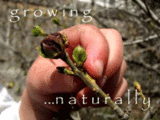
I've got some catching up to do after my postlessness of the last two weeks! Before the flu knocked me out again, we did a little studying of carnivorous plants.
My oldest, despite his love for all things that creep, crawl or fly, no matter how disgusting, decided a few weeks ago that he really wanted a few bug-eating plants. He was holding onto birthday money until we could find the right thing.
Terrariums for growing carnivorous plants from seed are easy to find, but haven't received great reviews on Amazon. It could take up to 6 months to get results. Maybe next year. First time around I wanted instant gratification, not a big bowl of dirt taking up room in the fridge for two months.
We're fortunate to have a nursery specializing in carnivorous plants in California, but I thought we should wait and see what we could find in town, and save on shipping.
I called around to our local nurseries, and only The Home Depot was expecting to have any carnivorous plants in soon. While we waited, we watched videos like this one. After a week, the Depot finally had the venus fly trap and pitcher plant in the photo above. Then we picked up a couple books on carnivorous plants at the library.
Did you know that Venus Fly Traps are native to the U.S., specifically the Carolina coast and a small area of Florida? And that wild-growing fly traps are endangered? Certain pitcher plants (Darlingtonia) are native to moist areas of California and Oregon. But don't go stomping through the wetlands to find them!
This is what Eldest has to say about carnivorous plants:
"Using a sticky goo that looks like a sweet treat for any insect, a fly will land on the plant, find out that it is very sticky, and it will struggle to get out, only stepping on more sticky hairs. As the plant starts to roll up, the fly is being crushed inside, and the plant releases a liquid that will turn the fly into soup that the plant will drink a few days later.
The venus fly trap uses a sweet smell that will attract flies to its mouth. After the fly trips on two hairs inside the trap, the plant will immediately close up, the fly inside. After a few days, the oils will be released, turning the insect into soup. In about a week, the insect will be digested by the plant. Then it will open again for the next meal."
Sadly, our two tiny carnivorous plants will probably not do much to control the flies that love our chicken coop.
Find answers to all your carnivorous questions here.









No comments:
Post a Comment